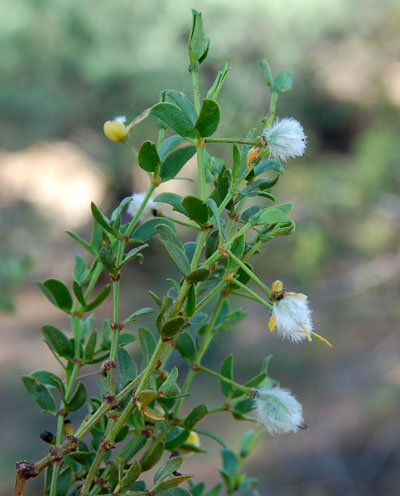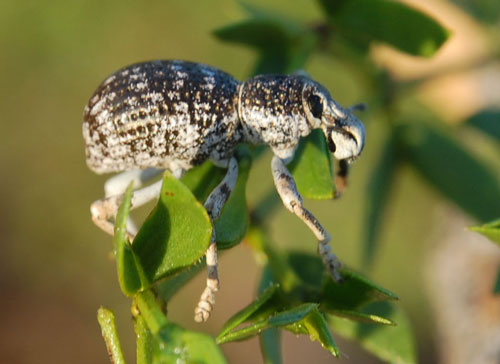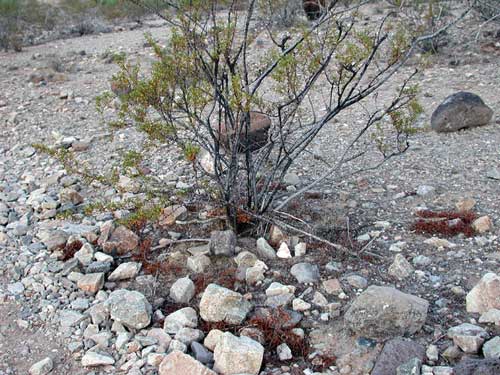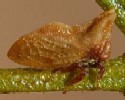Creosote Bush
Larrea tridentata

Vekol Valley, Sonoran Desert National Monument, Arizona. 9 Aug. 2008. The fuzzy fruits are composed of five carpels, or shizocarps, which separate easily into five nutlets containing one seed each.

Vekol Valley, Sonoran Desert National Monument, Arizona. 9 Aug. 2008. Jimmy Durante would be pleased to see this Silver Twig Weevil with its fabulous snout. Good information about the immature stages was not found ... presumably they feed as larvae within roots or stems. Powerfull and bulky muscles within the snout are required to operate the mandibles which must cut through the extremely hard wood of creosote bush.
Sponsored Links:
After good rains - summer or winter - creosote bush may be induced to flower. But the next good rain, when the resulting seeds will have a chance to germinate might not occur for many months if not a year or more. During this extended wait the seeds may remain attached to the parent plant for many months. Could this be considered a case of parental care in plants? The fine coat of glistening white hairs on the seed coat helps to protect the embryo inside from intense, hot sunshine. Off the ground they are less subject to depredation by seed-eating ants.
Zygophyllaceae -- Caltrop Family
Sponsored Links:

This picture was taken in Phoenix Mountain Preserve. A full resolution image is hosted at Wikimedia where there are additional images of Cottontail Rabbits.
Creosote Bush is the most abundant food source in much of the southwestern deserts, however, it has an abundance of noxious phenolic and other chemicals in the leaves and stems. The Desert Cottontail deals with this toxic brew by consuming limited quantities at one time and then only the least defended twig sections it can find. What is the method the cottontail uses to discriminate toxic from safe portions? Evidence of this selective herbivory can be found during drought periods as sprigs of dry, brown creosote leaves deposited around the periphery of shrubs after the edible twig portions have been eaten.
The
Desert Clicker is a small grasshopper that together with the creosote
 bush has become among the most ubiquitous organisms
in the Sonoran Desert. The naturalist might search many, many bushes before
finding a
Creosote Bush Walkingstick. Yet another well-camouflaged insect is a
tree hopper, Multareoides bifurcatus, photo at right.
bush has become among the most ubiquitous organisms
in the Sonoran Desert. The naturalist might search many, many bushes before
finding a
Creosote Bush Walkingstick. Yet another well-camouflaged insect is a
tree hopper, Multareoides bifurcatus, photo at right.